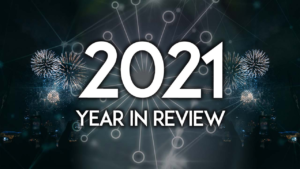
IDEA finishes 2021 with Exciting ProgressPete Ludé, Chairman |
|
Each year end provides an opportunity for stepping back to review the past 12-months. As it has for everyone, the past 12 months has certainly presented an unusual set of circumstances for the IDEA team, but the outcome has been some exciting progress. Let’s pause for a moment to review: • The posting of eight IDEA mini lectures started off the year. The lectures are on different aspects of the Immersive Ecosystem from the SMPTE Annual Technical conference. The recordings have enjoyed steady traffic, and you can still enjoy the full series on the video resource page on our website. • This May, we published the first edition of an important white paper on Photographic Live Action Capture for Immersive Media. This report summarizes over a year of study by our Live Action Working Group and sets a useful foundation for understanding the requirements of encoding objects and scenes that are captured through photographic, Lidar or other means. • In July, the Media Format Working Group completed updates to the ITMF (Immersive Technology Media Format) Container Specification and made this publicly available as version 1.1. The Media Format Working Group is working on the next version of the full ITMF suite of specifications. |
|
• In early October, our IDEA Network Architecture Working Group was able to produce our first live demonstration of streaming immersive content using ITMF over an edge network. This is a technical demonstration and tutorial that – in normal times – would have been a vibrant in-person gathering at one of the popular industry conferences. Given that these are far from “normal” times, IDEA produced this milestone demonstration as a live webcast. The good news is that because of that, the demo is available online now, in case you missed it. • In conjunction with our streaming demo, IDEA released libitmf – our first step towards a completely open reference implementation of the complete ITMF specification suite. Information about this open-source downloadable reference software is available. • Our Working Groups have also been busy mapping out our Roadmap for 2022, with more notable developments in the works. • In addition to the hard work within IDEA, it was exciting to see major product introductions of light field and holographic displays during 2021 from Member companies Light Field Labs and Looking Glass Factory. Significant new innovations were also released by IDEA Member OTOY relating to ITMF rendering. • Last but not least, following the formalization of our liaison agreement with the MPEG group, our IDEA team has been collaborating on defining and documenting requirements and future standards for the interchange and distribution of immersive media. We look forward to continuing joint efforts with MPEG throughout 2022. The constraints on travel and in-person meetings this year have certainly changed the ways in which we all communicate. Given the different times we find ourselves in, it was particularly gratifying to reflect on the remarkable progress made during 2021. Two things have become much more in focus – at least for me – during this past 12 months. First, the marketplace has clearly begun to embrace the future of immersive content on light field and advanced holographic displays. As these products become commercialized, and content creators realize the opportunities to extend their story- telling, there is a notable uptick in interest, research, and the exchange of ideas. Secondly, we still have a lot of work to do. If you are not already an IDEA member, now is a good time to step into the action, as IDEA accelerates our work to enable a truly immersive future. From all of us at IDEA, we wish you, your family and friends a joyous and relaxing holiday season. |

